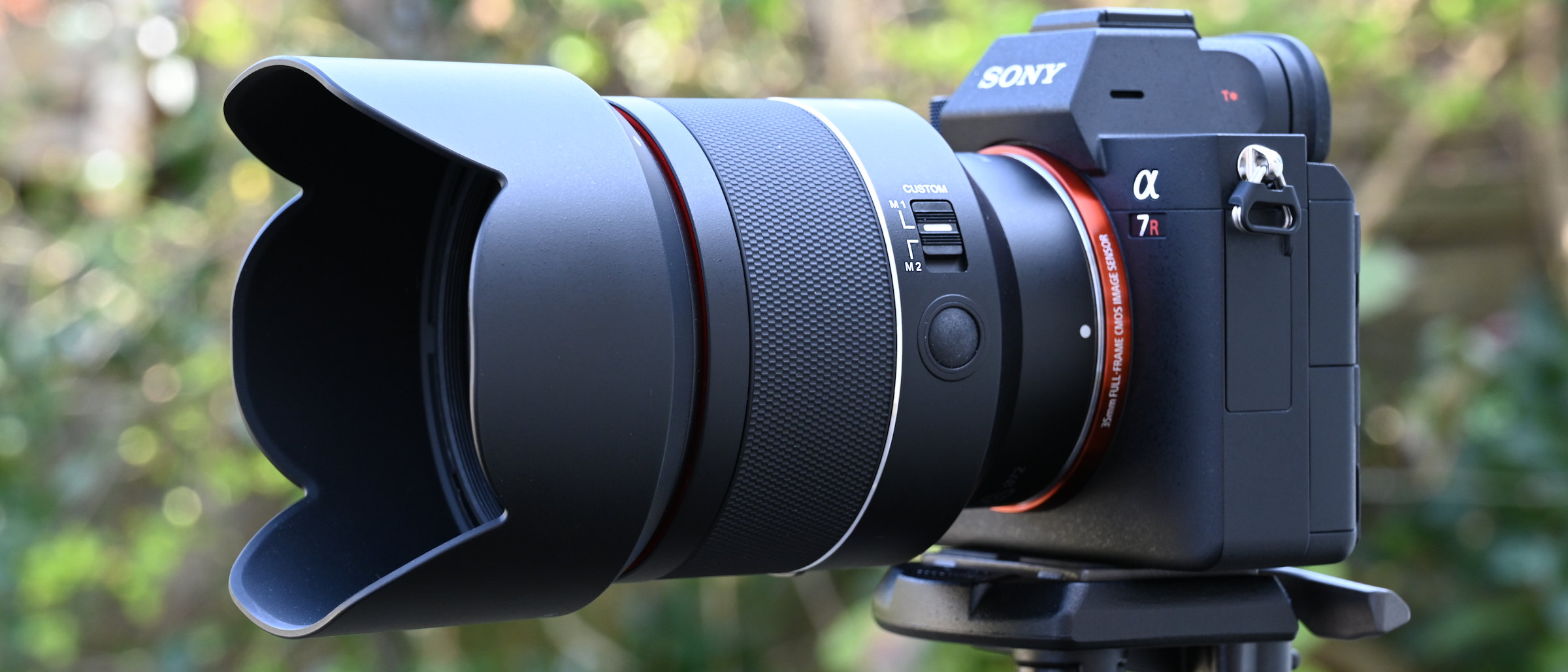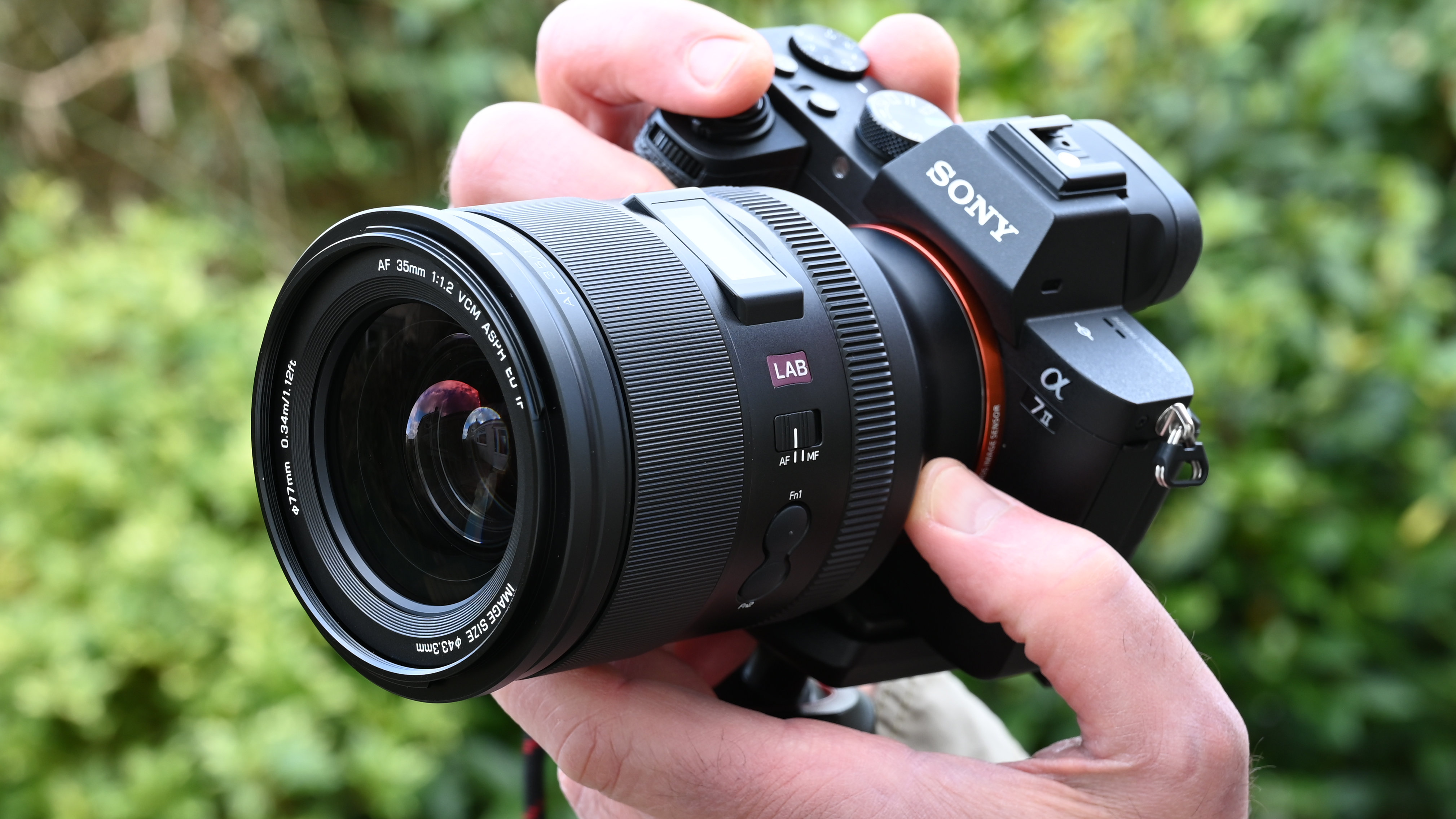Digital Camera World Verdict
A fast 50mm lens is arguably the most versatile and essential prime lens to buy, no matter how much you use zoom lenses. With its classic focal length and fast aperture rating, the Mark II edition of Samyang’s 50mm f/1.4 for Sony E-mount mirrorless delivers superb image quality and all-round performance. It’s a brilliant standard prime for full-frame bodies and works equally well as a short telephoto on APS-C format Sony cameras, with a 75mm ‘effective’ focal length. And it’s great value at the price.
Pros
- +
Relatively compact and lightweight
- +
New and improved autofocus
- +
Excellent build and performance
Cons
- -
‘Slower’ than Sony’s f/1.2 option
- -
No dedicated aperture control ring
Why you can trust Digital Camera World
The original edition of the Samyang AF 50mm F1.4 FE II was Samyang’s first ever autofocus lens, launched in celebration of the company’s 50th year in the business. Five years down the road, the Mark II features a new and improved autofocus system which is faster and more consistently accurate. It’s only one-third of an f/stop slower than the highly acclaimed Sony FE 50mm f/1.2 G Master lens, but barely more than half the weight and only half the price to buy.
Specifications
Lens construction: 11 elements in 8 groups
Full frame: Yes
Image stabilization: No
Autofocus: Yes
Angle of view: 45.7 degrees
Diaphragm blades: 9
Minimum aperture: f/16
Minimum focusing distance: 0.4m
Maximum magnification ratio: 0.16x
Filter size: 72mm
Dimensions: 80x89mm
Weight: 420g
Key features
Although relatively compact and lightweight for a modern 50mm f/1.4 lens, the Samyang packs some impressive features. Its new linear stepping motor-based autofocus system is super-fast for stills capture and works well for Sony’s face- and eye-detection AF, complete with highly effective tracking. It also enables smooth autofocus transitions for movie capture, the latter with minimal focus breathing, so the focus position doesn’t change when you adjust the aperture.
Premium glass includes two U-ASP (Ultra-precision Aspherical) elements, three HR (High Refractive index) elements and one ED (Extra-low Dispersion) element.
Build and handling
Build quality and handling are both extremely good. Extensive weather-seals are used in the construction, which feels refined yet solid and robust. The electronically coupled focus ring works with smooth precision, enabling very fine adjustments.
Like the competing Sony f/1.2 G Master lens, the Samyang features a customizable focus hold button, which you can assign to different functions. It also has a two-position ‘Custom’ switch that enables alternative uses for the focus ring, like stepless aperture control. However, there’s no dedicated aperture control ring, as featured in the Sony G Master lens.
Performance
The speed and consistent accuracy of the Mark II lens’s new autofocus focus system lives up to its billing, delivering excellent performance. Image quality is superb, combining impressive sharpness even when shooting wide-open at f/1.4 with beautifully smooth bokeh. The quality of bokeh remains very good when stopping down a little, helped by a well-rounded 9-blade aperture diaphragm.
Fast lenses often suffer from noticeable axial (or longitudinal) chromatic aberration, which causes color fringing around high-contrast transitions just in front of or behind the point of focus but the Samyang keeps this to very minimal levels. It also does well to minimize lateral chromatic aberration and distortion, for which in-camera corrections are available.
Sample images
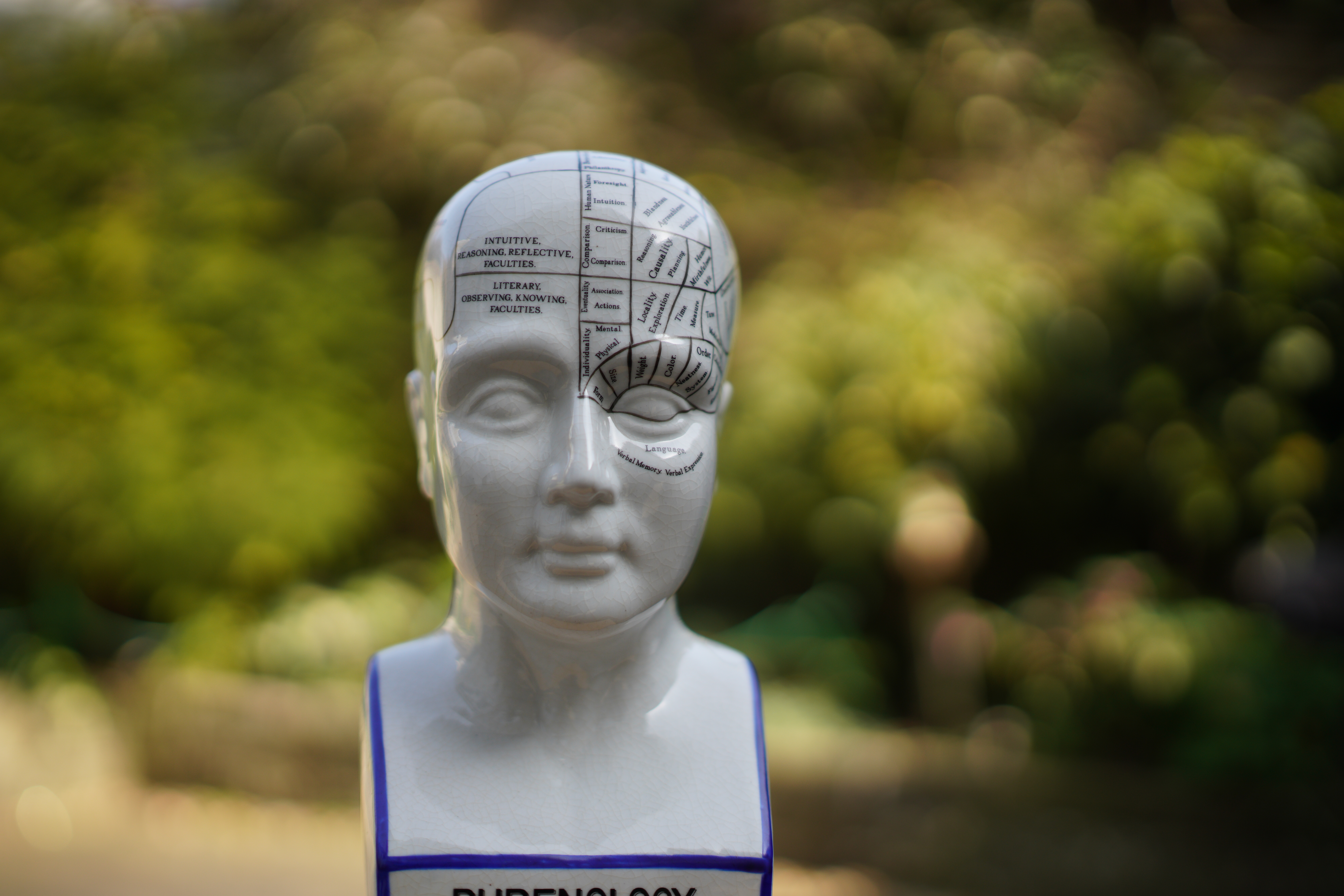
This pair of shots shows how sharpness is retained well wide-open at f/2.8, while bokeh remains pleasing when stopping down by an f/stop to f/2, with well-rounded bokeh discs.
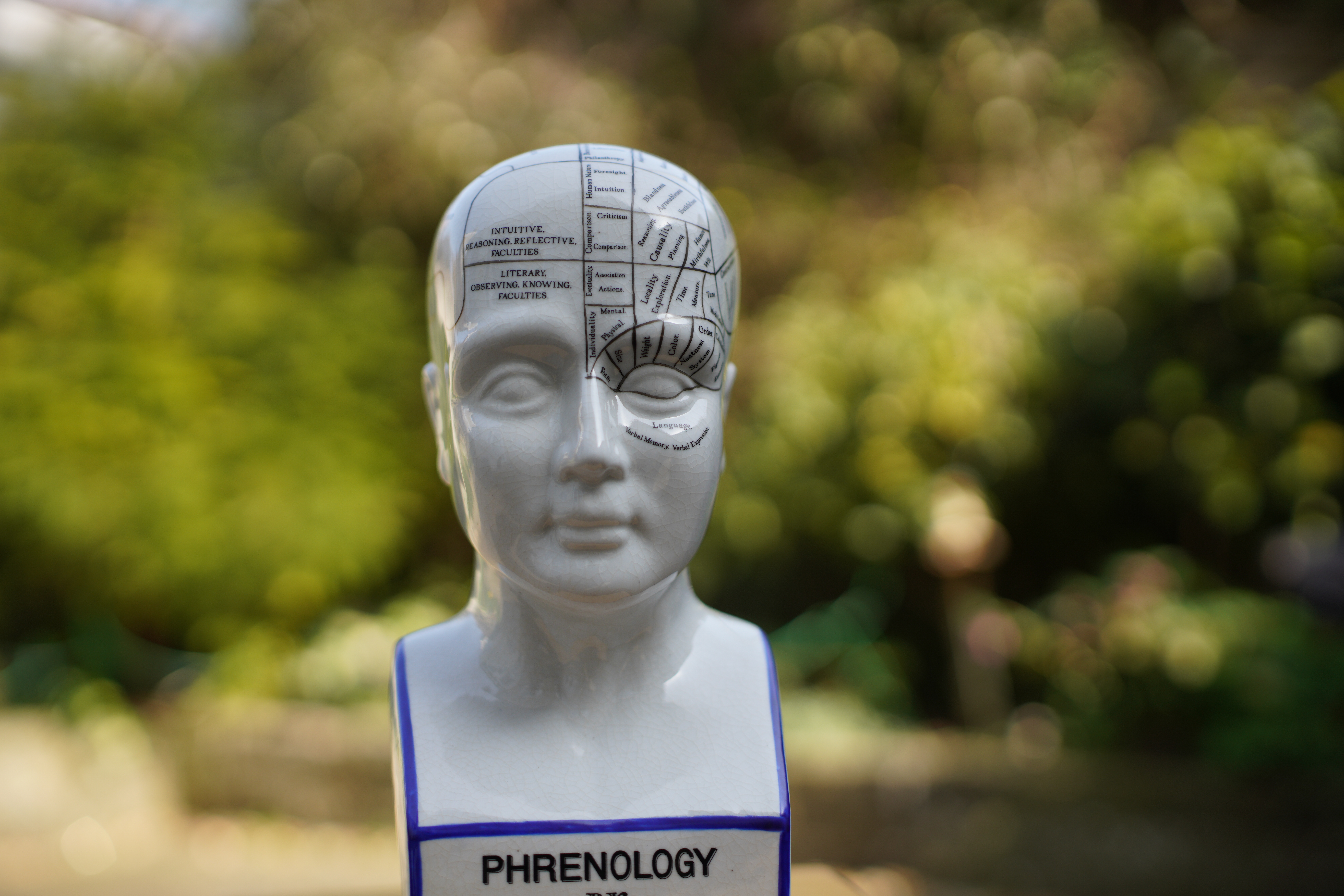
This pair of shots shows how sharpness is retained well wide-open at f/2.8, while bokeh remains pleasing when stopping down by an f/stop to f/2, with well-rounded bokeh discs.

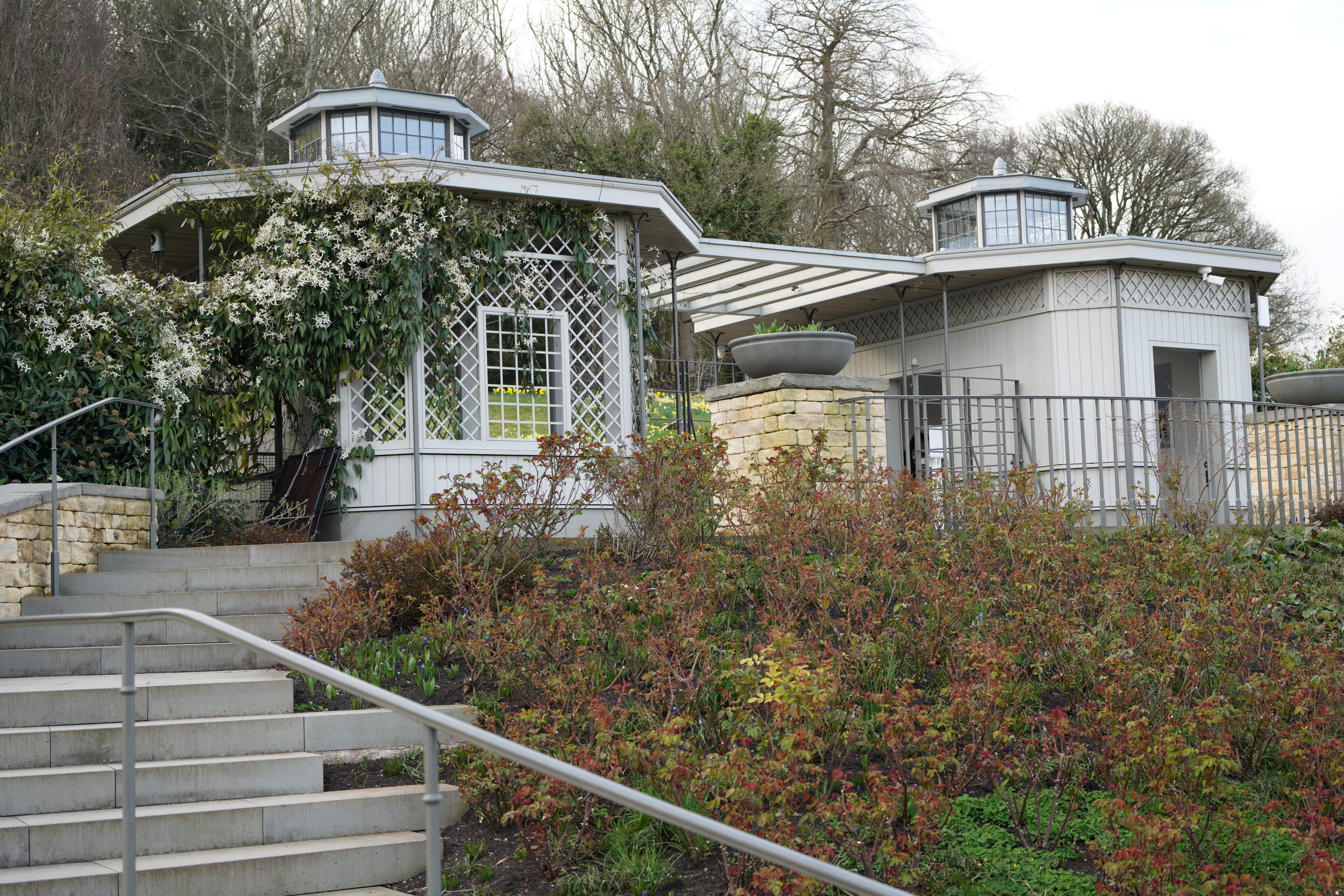
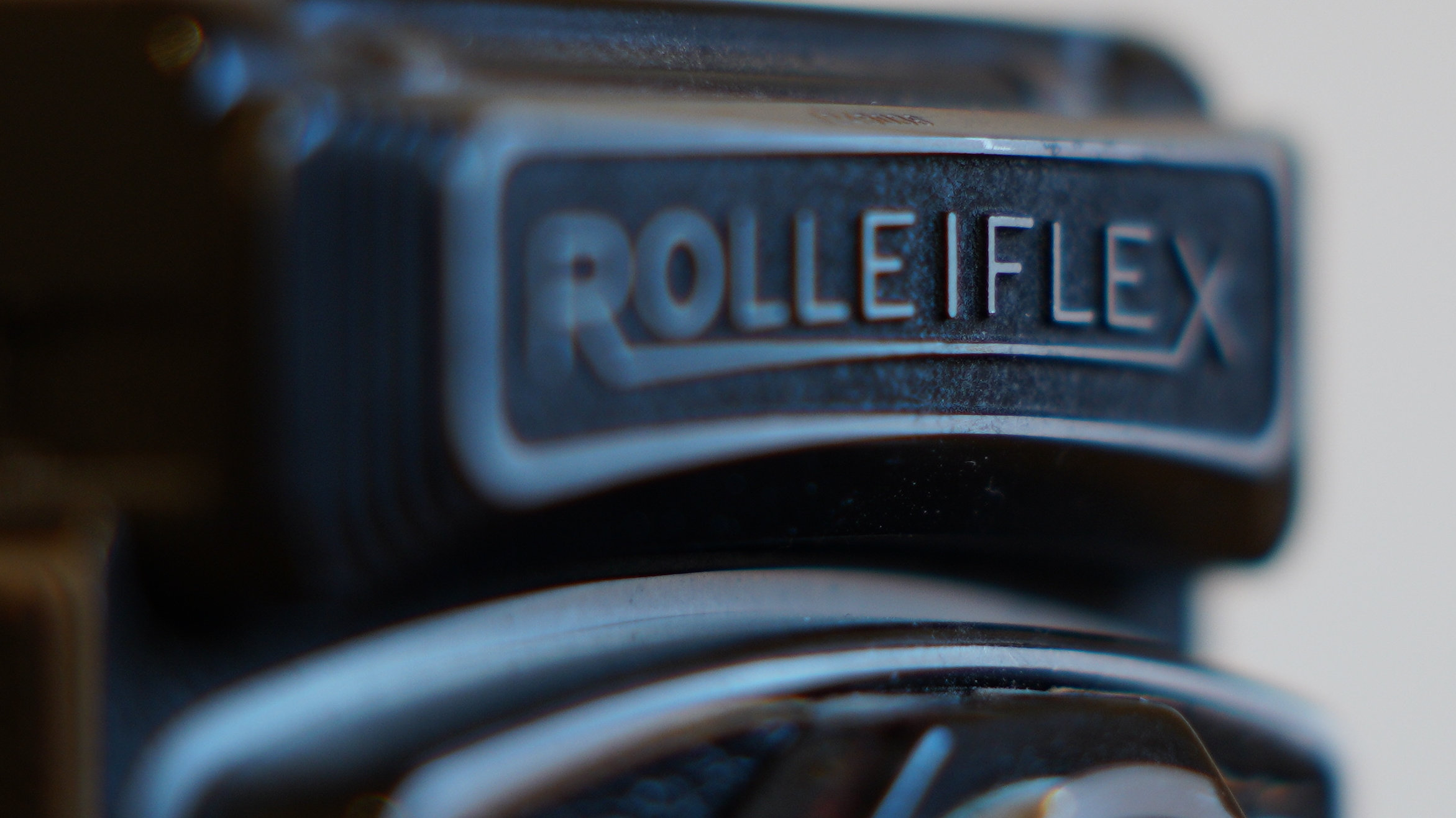
Lab results
We run a range of lab tests under controlled conditions, using the Imatest Master testing suite. Photos of test charts are taken across the range of apertures and zooms (where available), then analyzed for sharpness, distortion and chromatic aberrations.
We use Imatest SFR (spatial frequency response) charts and analysis software to plot lens resolution at the center of the image frame, corners and mid-point distances, across the range of aperture settings and, with zoom lenses, at four different focal lengths. The tests also measure distortion and color fringing (chromatic aberration).
Sharpness:
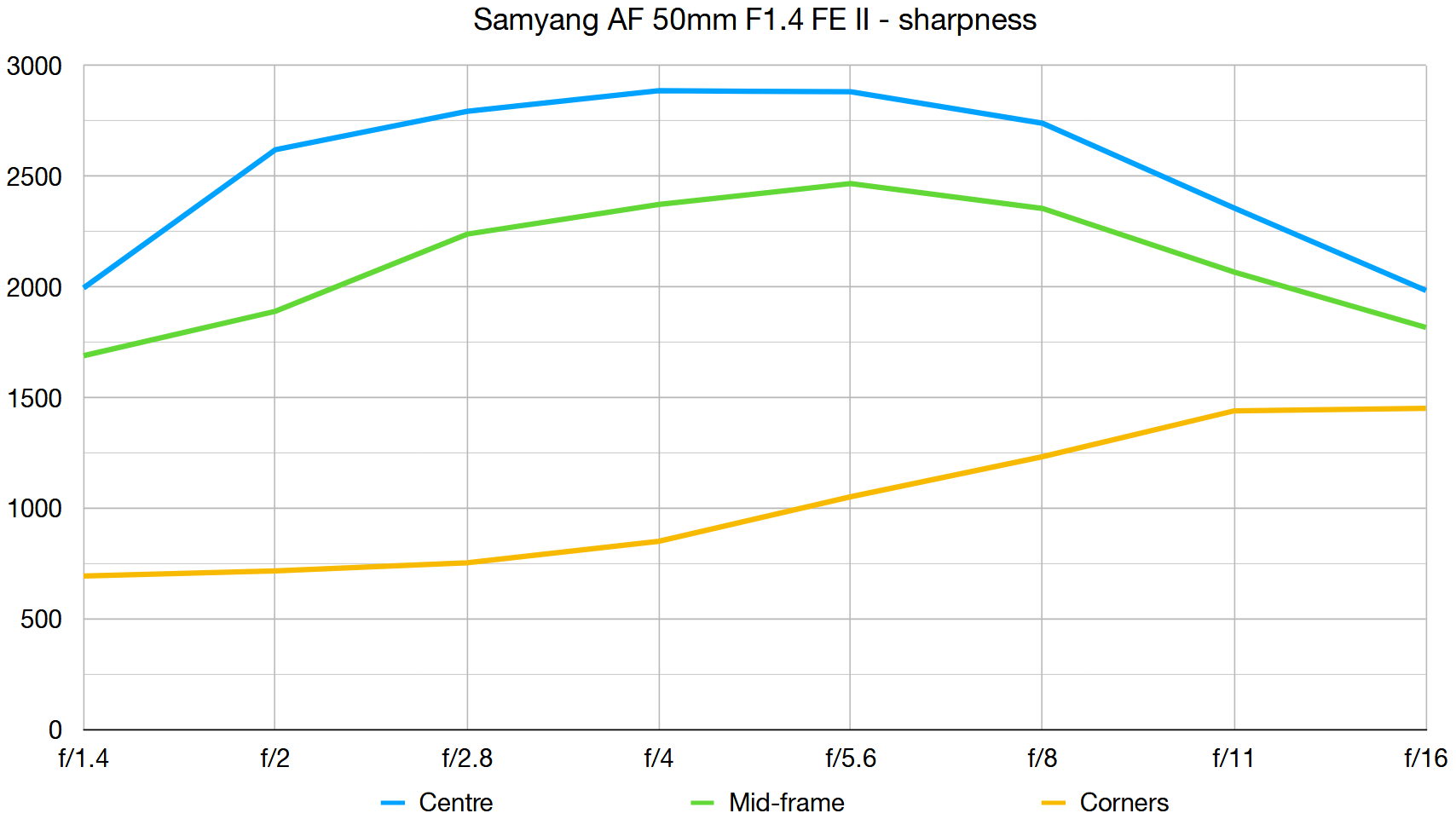
Center-frame sharpness is nothing short of sensational between f/2 and f/8. Even wide open at f1.4 the lens is very sharp in the central region. Move out to the midframe region and sharpness drops a little, but not enough to notice in most real world scenarios. It's only once you get into the corners of frame the sharpness takes a real tumble. From wide open through to f/5.6, corner sharpness is disappointingly low.
Fringing:
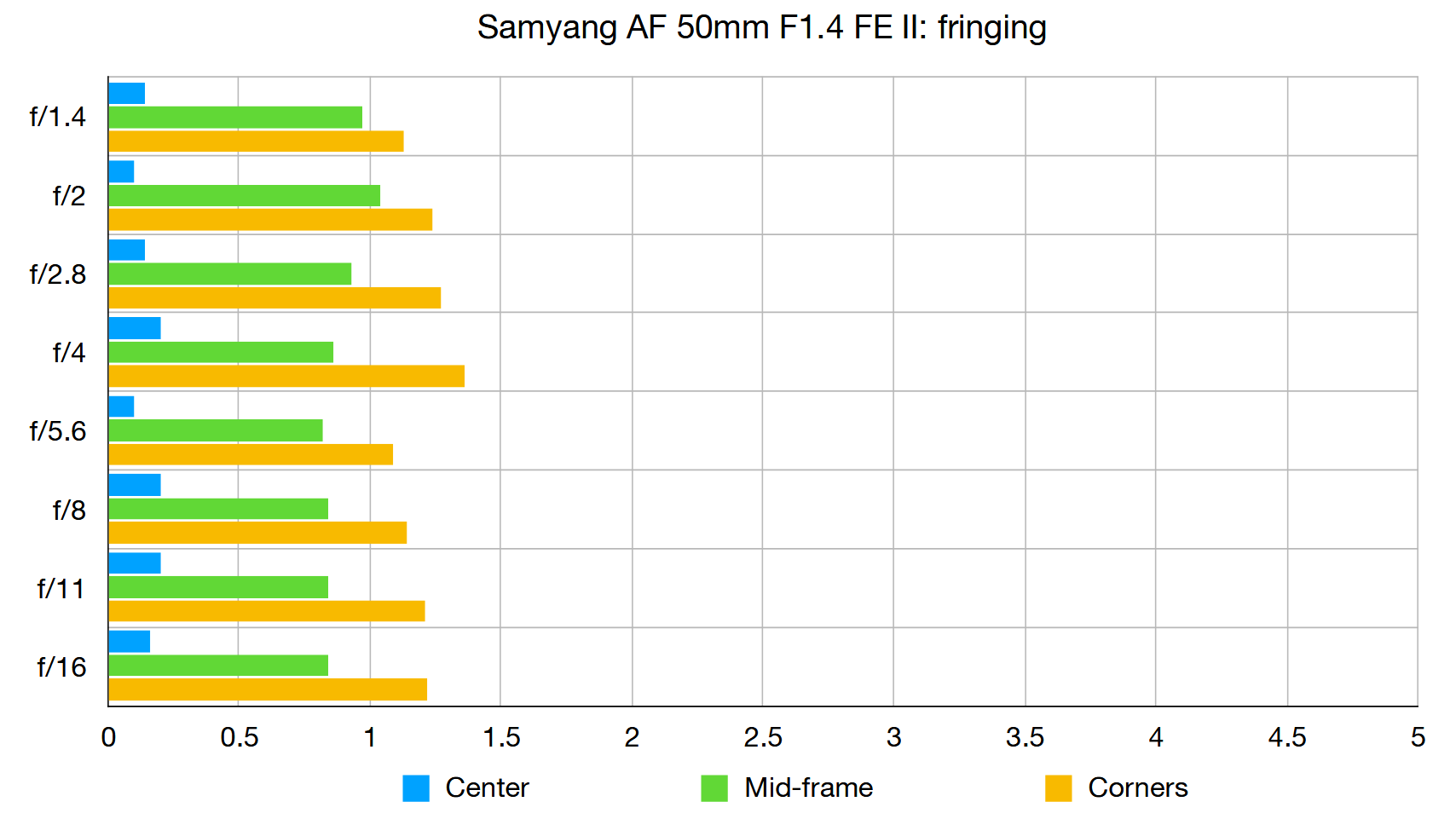
Lateral chromatic aberration in the mid-frame and extreme corners is just enough to be noticable in high-contrast scenes, but it's nothing distracting.
Distortion: 0.31
There's a trace of pincushion distortion, but you wouldn't notice any in real world shooting.
Verdict
A fast 50mm lens is arguably the most versatile and essential prime lens to buy, no matter how much you use zoom lenses. With its classic focal length and fast aperture rating, the Mark II edition of Samyang’s 50mm f/1.4 for Sony E-mount mirrorless delivers superb image quality and all-round performance. It’s a brilliant standard prime for full-frame bodies and works equally well as a short telephoto on APS-C format Sony cameras, with a 75mm ‘effective’ focal length. And it’s great value at the price.
Read more:
• Best camera lenses to get
• Best Canon lenses
• Best Nikon lenses
• Best Sony lenses
Matthew Richards is a photographer and journalist who has spent years using and reviewing all manner of photo gear. He is Digital Camera World's principal lens reviewer – and has tested more primes and zooms than most people have had hot dinners!
His expertise with equipment doesn’t end there, though. He is also an encyclopedia when it comes to all manner of cameras, camera holsters and bags, flashguns, tripods and heads, printers, papers and inks, and just about anything imaging-related.
In an earlier life he was a broadcast engineer at the BBC, as well as a former editor of PC Guide.
